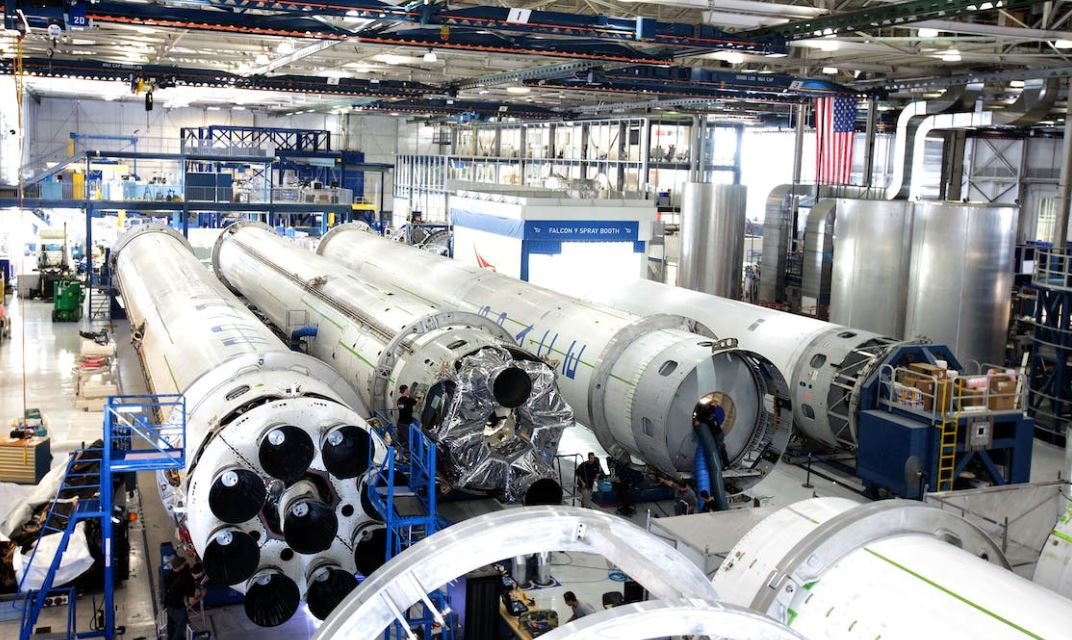Production With One Variable Input Example
Production with one variable input is an economic concept that focuses on the relationship between the quantity of output produced and the quantity of a single variable input used in the production process. This concept is important in understanding how changes in the input quantity affect the output level, and helps businesses make informed decisions regarding production strategies and resource allocation.
Key Takeaways
- Production with one variable input analyzes how changes in the quantity of a single variable input affect the level of output produced.
- The concept is based on the principle of diminishing marginal returns, where increasing the quantity of the variable input eventually leads to a smaller increase in output.
- Understanding the relationship between input and output helps businesses optimize production processes and allocate resources efficiently.
- Efficiency can be maximized by identifying the optimal level of the variable input that maximizes output while minimizing costs.
As a simple example, let’s consider a bakery that produces bread. The variable input in this case is labor. As the bakery hires more workers, the output of bread they can produce will increase. However, there will come a point where adding more workers will result in diminishing marginal returns—the additional workers will not contribute as much to the overall production as the initial hires did.
In this scenario, the bakery might find that increasing the workforce from 1 to 2 results in a significant increase in bread production, but increasing it from 2 to 3 only leads to a modest gain in output.
Table 1: Relationship Between Labor and Bread Production
| Number of Workers | Quantity of Bread Produced |
|---|---|
| 0 | 0 |
| 1 | 50 loaves |
| 2 | 90 loaves |
| 3 | 110 loaves |
| 4 | 120 loaves |
In Table 1, we can see how the quantity of bread produced increases as the number of workers employed by the bakery increases. However, the increase in production begins to slow down as the number of workers reaches 3 and 4, indicating diminishing marginal returns.
This example demonstrates the concept of diminishing marginal returns, where the additional workers contribute less to the overall production as the number of workers increases.
Knowing when to stop adding more variable input is crucial for businesses to maximize efficiency and minimize costs. In this case, the bakery might find that hiring 2 workers is the optimal level, as adding a third or fourth worker only results in small increases in bread production. By identifying this optimal level, the bakery can allocate resources effectively and avoid unnecessary expenses on labor.
Table 2: Marginal Product of Labor
| Number of Workers | Change in Quantity of Bread Produced |
|---|---|
| 1 | 50 loaves |
| 2 | 40 loaves |
| 3 | 20 loaves |
| 4 | 10 loaves |
Table 2 shows the marginal product of labor, which represents the change in the quantity of bread produced as a result of hiring an additional worker. As we can see, the marginal product decreases as the number of workers increases, reflecting the diminishing marginal returns.
Understanding the marginal product of labor helps businesses assess the productivity and efficiency of each additional worker, allowing them to make informed decisions about resource allocation.
Another important concept related to production with one variable input is average product. Average product measures the amount of output produced per unit of the variable input used. It is calculated by dividing the quantity of output by the quantity of the variable input.
Table 3: Average Product of Labor
| Number of Workers | Quantity of Bread Produced | Average Product of Labor |
|---|---|---|
| 1 | 50 loaves | 50 loaves/worker |
| 2 | 90 loaves | 45 loaves/worker |
| 3 | 110 loaves | 36.7 loaves/worker |
| 4 | 120 loaves | 30 loaves/worker |
Table 3 illustrates the average product of labor for the bakery example. As the number of workers increases, the average product of labor decreases, indicating diminishing returns on average. This means that, on average, each additional worker contributes less to the overall production.
Understanding the average product of labor helps businesses evaluate the efficiency of their production processes and make informed decisions regarding resource allocation.
In conclusion, analyzing production with one variable input provides valuable insights into the relationship between input and output. Through concepts like diminishing marginal returns and average product, businesses can optimize production processes and allocate resources efficiently. By identifying the optimal levels of the variable input, businesses can maximize output while minimizing costs, ultimately improving their overall performance and competitiveness.

Common Misconceptions
First Misconception: More input always leads to more production
One common misconception is that increasing the input of just one variable will always result in increased production. While it is true that increasing the quantity of one variable input can generally lead to increased production, there are limits to this relationship. There is a point where adding more of the variable input will no longer result in proportional output gains, and may even start to yield diminishing returns.
- Increasing the input beyond a certain point may not have a significant impact on production.
- There may be other limiting factors that prevent further production increase.
- The marginal product of the variable input may decrease as more of it is added.
Second Misconception: Only one variable input affects production
Another common misconception is that production is solely dependent on one variable input. In reality, there are usually several inputs that contribute to the production process. While one variable input may be the focus of the analysis, it is important to recognize the interdependencies and synergies between different inputs.
- Other inputs, such as fixed inputs, can also have an impact on production.
- The interaction between different inputs can influence overall productivity.
- Changes in one input can affect the optimal use of other inputs.
Third Misconception: The relationship between input and output is linear
Many people assume that the relationship between input and output is linear, meaning that equal increases in input will always result in equal increases in output. However, this is not always the case. In reality, the relationship can be nonlinear and may vary depending on the specific production function and context.
- The production function may exhibit diminishing marginal returns.
- The relationship may be subject to economies or diseconomies of scale.
- There may be thresholds or critical points where the relationship changes abruptly.
Fourth Misconception: The sole goal is to maximize input
Some people mistakenly believe that the sole objective in production is to maximize the input of the variable factor. While input optimization is certainly important, it is not the only goal. In many cases, the objective is to maximize output or achieve a certain level of productivity while considering the costs and constraints involved.
- Efficiency and cost-effectiveness are key considerations in production.
- Maximizing total revenue or profit may be the ultimate goal.
- Trade-offs between inputs and outputs need to be evaluated.
Fifth Misconception: The relationship between input and output is static
Finally, a common misconception is that the relationship between input and output remains constant over time. Production processes are dynamic and subject to change due to various factors, such as technological advancements, market conditions, and resource availability.
- Technological advancements can influence the productivity of inputs.
- Changes in demand or market conditions may require adjustments to input levels.
- Input availability and quality can fluctuate, affecting the production function.

Production With One Variable Input Example
This article explores the concept of production using one variable input. In the context of production, a variable input refers to a factor that can be changed in quantity or quality, affecting the output. Understanding how different levels of a variable input impact production can help businesses optimize their processes and improve efficiency. The following tables present data and information to illustrate various points related to production with one variable input.
Effect of Labor on Production
In this example, we analyze the effect of labor on production. We consider a scenario where a company operates a bakery and the variable input is the number of workers. The table below shows the relationship between the number of workers and the daily output of bread loaves.
| Number of Workers | Daily Output (Bread Loaves) |
|---|---|
| 1 | 50 |
| 2 | 100 |
| 3 | 140 |
| 4 | 170 |
| 5 | 190 |
Diminishing Marginal Returns
In this table, we examine the concept of diminishing marginal returns. Diminishing marginal returns occur when the additional output generated from each additional unit of the variable input starts to decrease. The example here illustrates the relationship between the number of fertilizer units applied to a field and the resulting crop yield.
| Number of Fertilizer Units | Crop Yield (in kg) |
|---|---|
| 1 | 10 |
| 2 | 23 |
| 3 | 32 |
| 4 | 38 |
| 5 | 41 |
Optimal Input Level
In this table, we analyze the concept of finding the optimal level of the variable input to maximize production efficiency. The scenario here involves a factory that produces smartphones, and the variable input is the amount of battery power used in each device. The table demonstrates the relationship between battery power and the number of smartphones produced per hour.
| Battery Power (mAh) | Smartphones Produced per Hour |
|---|---|
| 1000 | 50 |
| 2000 | 110 |
| 3000 | 160 |
| 4000 | 180 |
| 5000 | 190 |
Specialization and Division of Labor
In this example, we examine the benefits of specialization and division of labor. The following table presents data on the number of cars produced in an automobile assembly line based on the specialization of workers in different tasks.
| Assembly Line Composition | Number of Cars Produced per Day |
|---|---|
| All Workers | 10 |
| Specialized in Chassis | 15 |
| Specialized in Engine | 12 |
| Specialized in Electronics | 17 |
| Specialized in Interior | 14 |
Economies of Scale
In this table, we explore the concept of economies of scale, which refers to the cost advantages a company gains when it increases its scale of production. The data presented here shows the relationship between the number of units produced and the average cost per unit for a manufacturing plant.
| Units Produced | Average Cost per Unit ($) |
|---|---|
| 10 | 20 |
| 20 | 16 |
| 30 | 14 |
| 40 | 13 |
| 50 | 12 |
Technology Advancement
The following table showcases the impact of technology advancement on production efficiency. It presents data on the number of articles written per hour by a group of journalists using different word processing software.
| Word Processing Software | Articles Written per Hour |
|---|---|
| Software A (Old Version) | 5 |
| Software B (Updated Version) | 8 |
| Software C (Cutting-Edge Version) | 12 |
| Software D (AI-Assisted Version) | 18 |
| Software E (Future Version) | 24 |
Quality Control and Defects
This table focuses on quality control and defects in production. It demonstrates the relationship between the number of inspections conducted at a manufacturing plant and the percentage of defective products identified.
| Number of Inspections | Percentage of Defective Products |
|---|---|
| 1 | 8% |
| 2 | 4% |
| 3 | 2% |
| 4 | 1% |
| 5 | 0.5% |
Environmental Impact
In this table, we consider the environmental impact of production. The data presented showcases the carbon emissions generated by different energy sources used in a manufacturing plant.
| Energy Source | Carbon Emissions (kg CO2) |
|---|---|
| Coal | 500 |
| Natural Gas | 300 |
| Solar | 10 |
| Wind | 5 |
| Hydroelectric | 1 |
Conclusion
Production with one variable input is a key concept in economics and businesses. Through the data and examples presented in the tables, we can observe the impact of different variable inputs on production output, efficiency, cost, and other factors. Understanding these relationships can help businesses make informed decisions to optimize their production processes, enhance productivity, and reduce costs. By considering various aspects such as labor, specialization, economies of scale, technology advancement, quality control, and environmental impact, companies can strive for continuous improvement and success in today’s competitive markets.
Frequently Asked Questions
What is meant by production with one variable input?
Production with one variable input refers to a production process where only one input can be varied or changed while keeping all other inputs constant. This input is often referred to as the variable input because its quantity can be modified to observe the impact on output.
Why is production with one variable input important to study?
Studying production with one variable input is crucial to understand how changes in a single input affect the overall production output. It allows economists and businesses to analyze the relationship between inputs and output, determine optimal input levels, and make informed decisions regarding resource allocation and cost management.
What is the role of the fixed input in this type of production?
In production with one variable input, the fixed input represents the input that remains constant throughout the production process. While the variable input may change, the fixed input’s quantity remains unchanged. This fixed input could be machinery, factory space, or any other resource that cannot be easily adjusted in the short run.
What are some examples of production with one variable input?
Examples of production with one variable input include: a bakery using varying amounts of labor to produce different quantities of bread, a factory employing different numbers of workers to manufacture different levels of goods, or a farm utilizing different amounts of fertilizer to yield varying crop outputs.
How is the relationship between input and output depicted graphically?
The relationship between input and output in production with one variable input can be graphically represented using a production function. Typically, the quantity of the variable input is plotted on the x-axis, while the corresponding output is displayed on the y-axis. The resulting graph illustrates the relationship between input and output, showcasing how changes in input quantity impact the production level.
What is the concept of diminishing marginal returns?
Diminishing marginal returns, also known as diminishing marginal productivity, suggests that as more of the variable input is added while the fixed input remains constant, the additional output gained from each additional unit of the variable input decreases. This occurs due to the limitations imposed by the fixed input, such as insufficient space, managerial capacity, or specialized resources.
How does one calculate the marginal product of the variable input?
The marginal product of the variable input can be calculated by dividing the change in total output resulting from a one-unit increase in the variable input quantity.
What is the importance of understanding the marginal product?
Understanding the marginal product of the variable input is crucial for businesses to optimize production levels. By analyzing the relationship between the input quantity and its corresponding output increase, firms can determine the point where additional input no longer yields significant productivity gains. This helps in identifying the optimal input level to maximize efficiency and minimize costs.
How does production with one variable input relate to the concept of economies of scale?
Production with one variable input is closely linked to the concept of economies of scale. Economies of scale occur when an increase in the quantity of input leads to a proportionately greater increase in output, resulting in lower average costs per unit. Understanding the relationship between the variable input and output can help identify when economies of scale are present, allowing businesses to expand production and reduce costs.
Can production with one variable input lead to diseconomies of scale?
Yes, production with one variable input can lead to diseconomies of scale when further increases in the variable input result in decreasing returns. Diseconomies of scale occur when the average production costs increase as output expands. This often happens when operational inefficiencies or resource constraints arise, leading to higher costs and reduced productivity.




